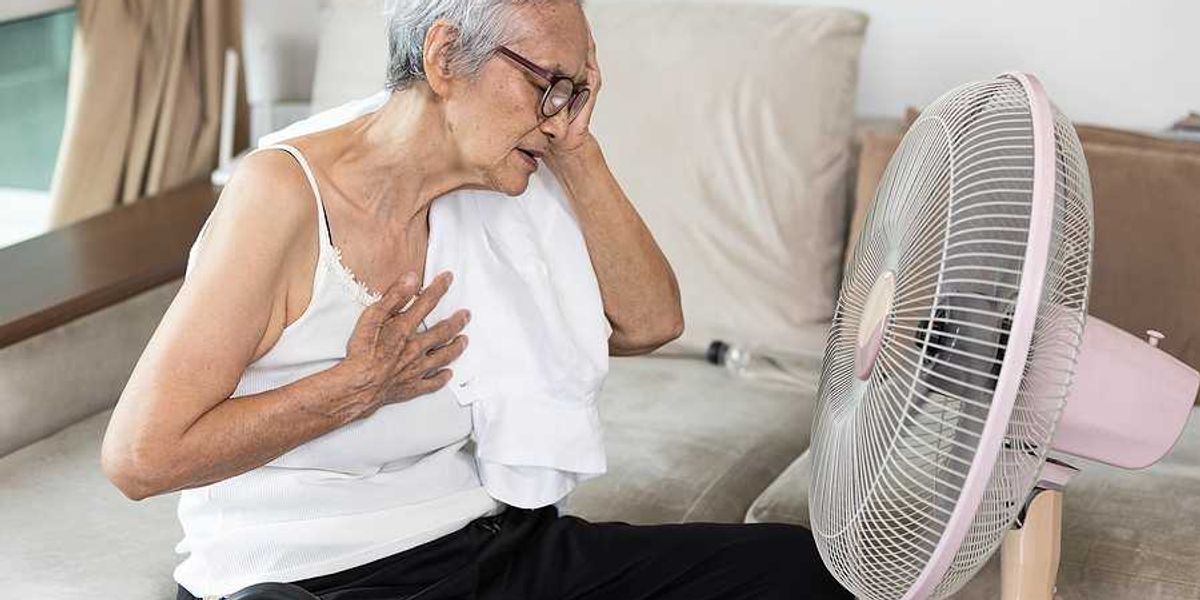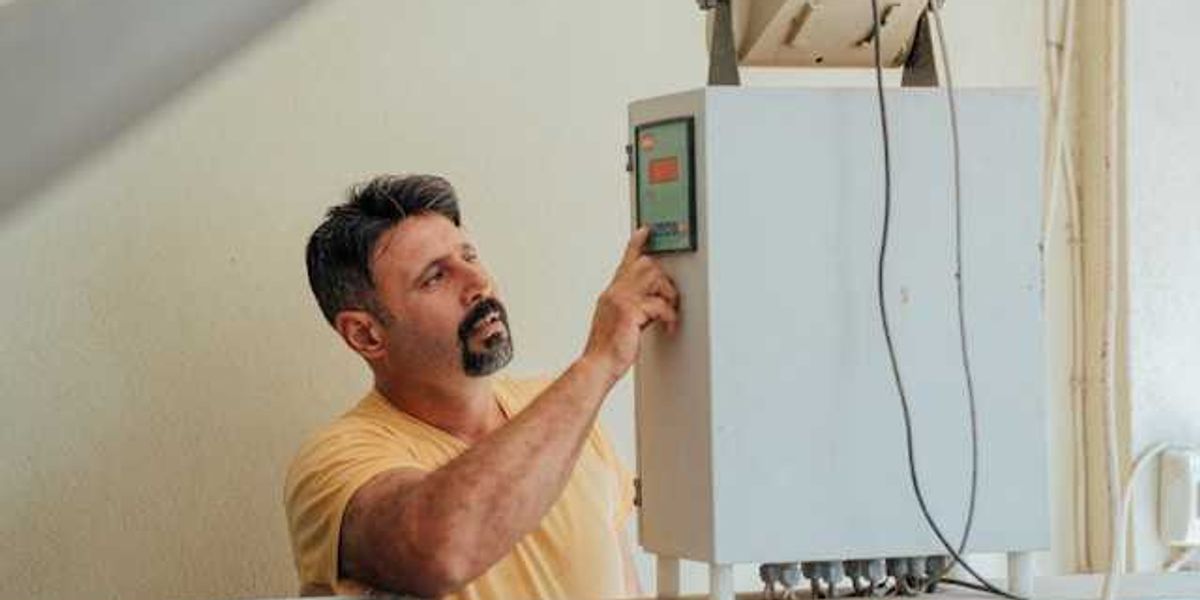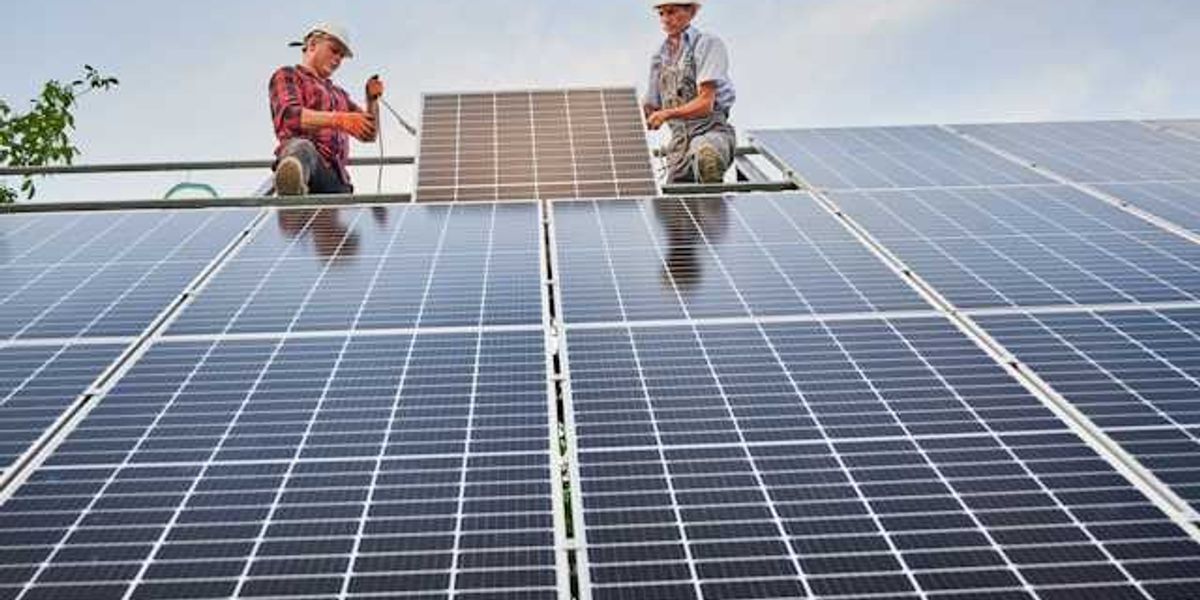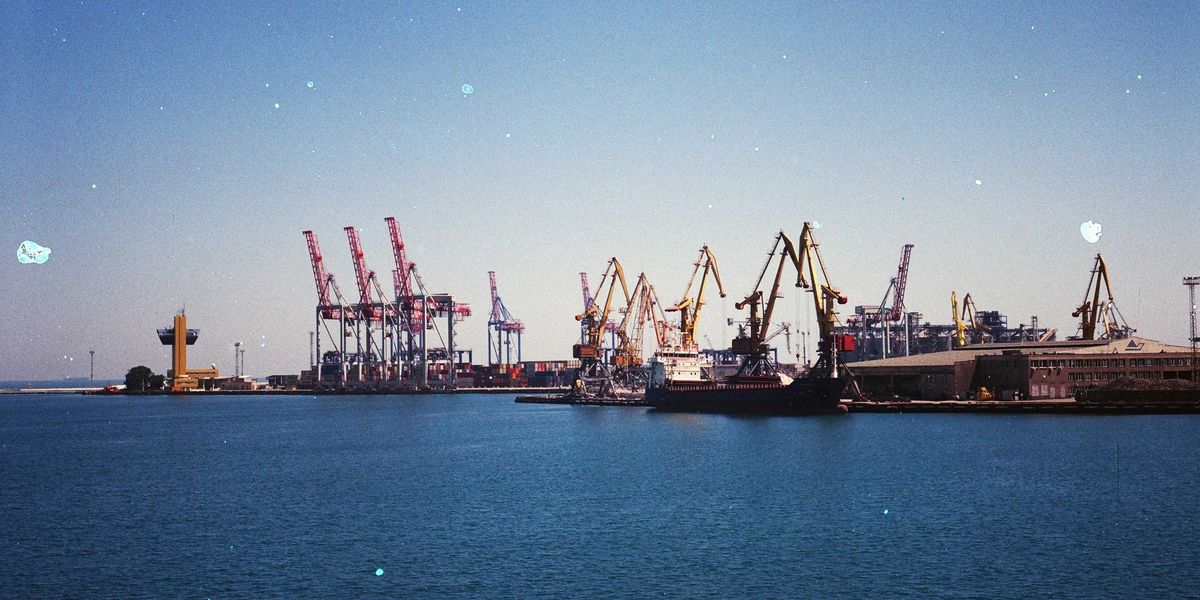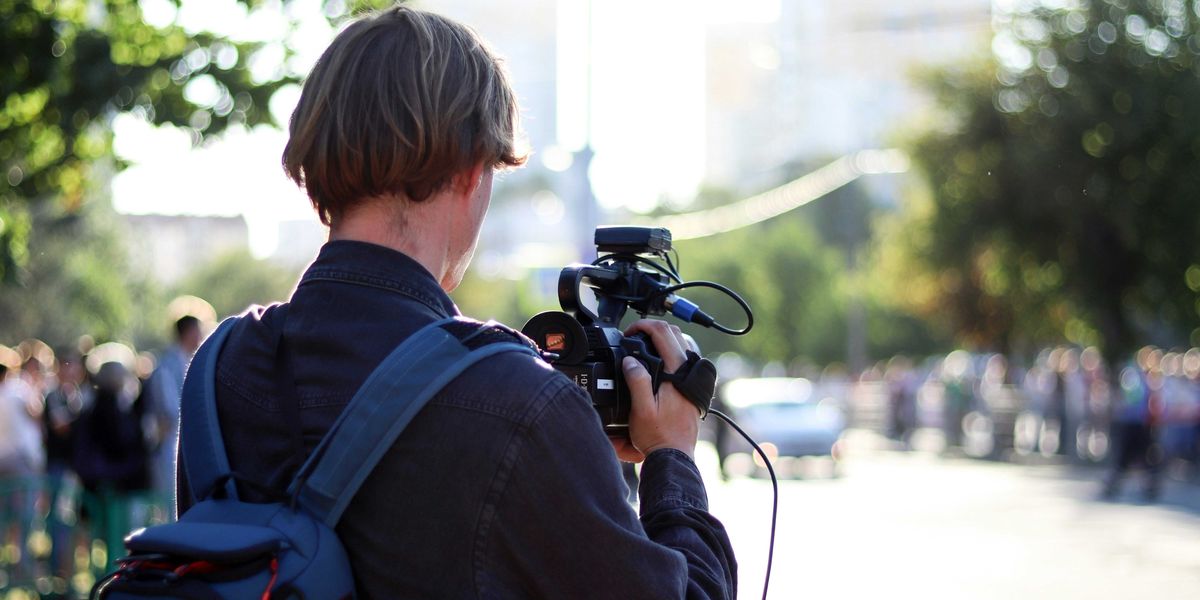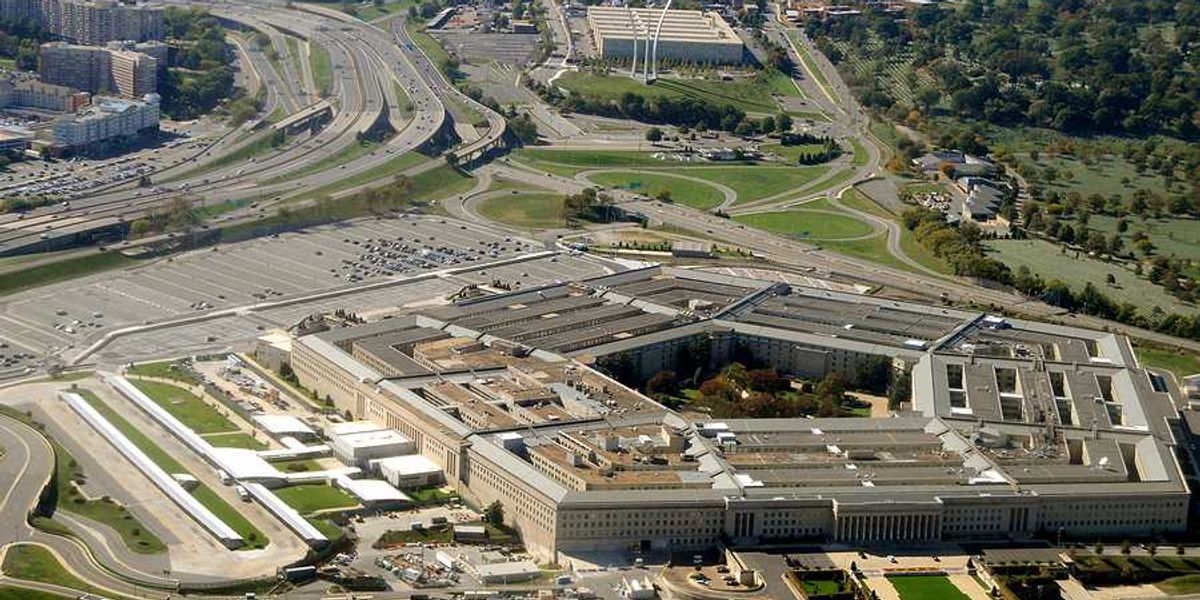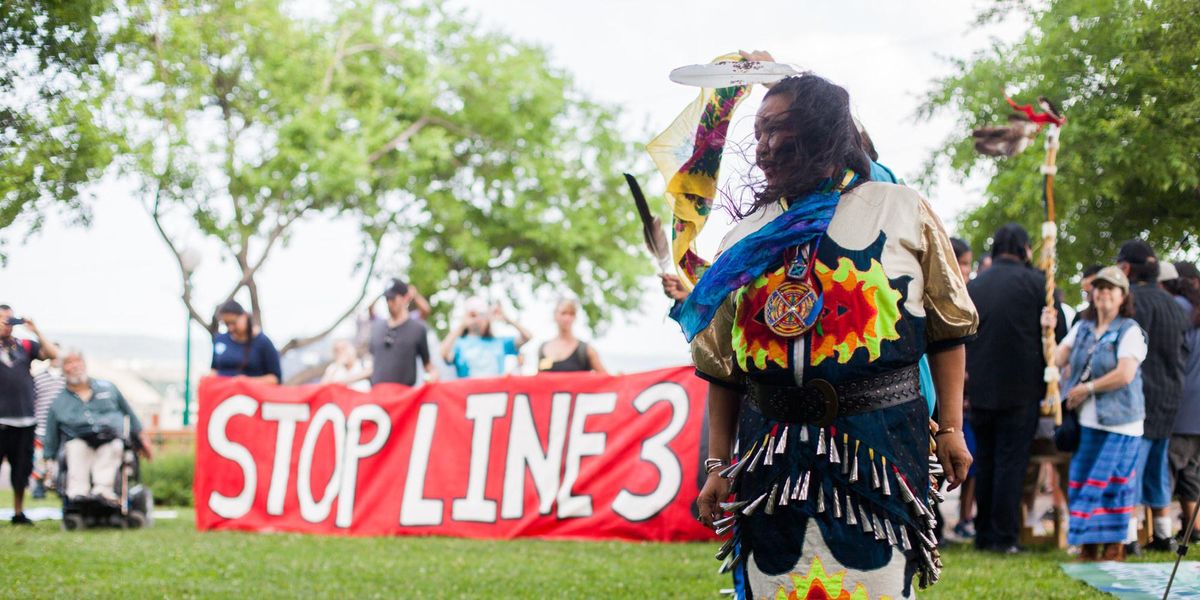
Why Indigenous women are risking arrest to fight Enbridge’s Line 3 pipeline through Minnesota
Enbridge's Line 3 pipeline construction is running into tribal resistance over fears of water pollution, wild rice impacts, climate change, and exploitation of Native women.
On Dec. 14, Simone Senogles of the Red Lake Nation in Minnesota watched as machines chewed up the forest to clear a path to the Mississippi River where Enbridge plans to bury the Line 3 pipeline.
Weeks earlier, the state and federal government granted its final permits. Her friend's nephew sat 30 feet above in a tree. A cherry picker rolled forward to extract him.
Senogles, a leadership team member for the Indigenous Environmental Network who fought the Dakota Access Pipeline at Standing Rock, knew the Line 3 opposition had other strategies in place — court challenges, divestment campaigns — but in that moment she felt "a tremendous sense of responsibility." She said she locked arms with about 20 other water protectors, hoping to slow the cherry picker, but dozens of police wrestled them to the frozen ground and arrested them.
Senogles was charged with unlawful assembly and trespassing. She said it felt insulting. "It's Anishinaabe land," she told EHN, referring to a group of Indigenous people whose traditional homeland stretches from the East Coast through the Great Lakes to the Midwest. "Enbridge is the trespasser, they are the criminal, and they were aided by law enforcement who are supposed to be protecting us, but instead they were protecting a corporation."
After a six-year-long permitting process, Enbridge contractors in Minnesota are building Line 3, the largest project in the company's history. If completed, it will carry 760,000 barrels of oil per day from Edmonton, Alberta, to Superior, Wisconsin, at the tip of Lake Superior, the planet's largest freshwater lake by surface area. Police from the Northern Lights Task Force, Minnesota police officers funded by Enbridge as a condition of state permits, have arrested 72 Indigenous people and allies since construction began Dec. 1, according to task force press releases. Water protectors have put their bodies on the line, building six resistance camps along the pipeline route, chaining themselves to equipment and camping in trees.
Opponents say the threats from the pipeline are many: thousands of construction workers, many from out-of-state, are building the pipeline, posing potential violence to Indigenous women. The pipeline will also contribute to climate change, emitting the equivalent greenhouse gases of 50 coal power plants or 38 million vehicles, according to a report by climate action group MN350. In Minnesota, the pipeline would cross under 200 bodies of water, passing through wetlands where wild rice, a traditional Ojibwe food, grows. The pipeline will carry diluted bitumen, a heavy oil that sinks in water, making it harder to clean up.
At a pivotal moment for global climate action, Line 3 opponents are privately meeting with President Joe Biden administration officials via video calls and publicly demanding they cancel the project. In his first week as president, Biden canceled the Keystone XL pipeline and signed an executive order vowing to address the climate crisis as part of domestic and foreign policy. Biden also promised to respect tribal rights. However, his administration has remained silent on Line 3.
Line 3 construction is paused due to muddy spring conditions, but Enbridge told EHN work will resume in June. At an April energy symposium, Enbridge CEO Al Monaco said Line 3 is on schedule to be completed by the end of the year.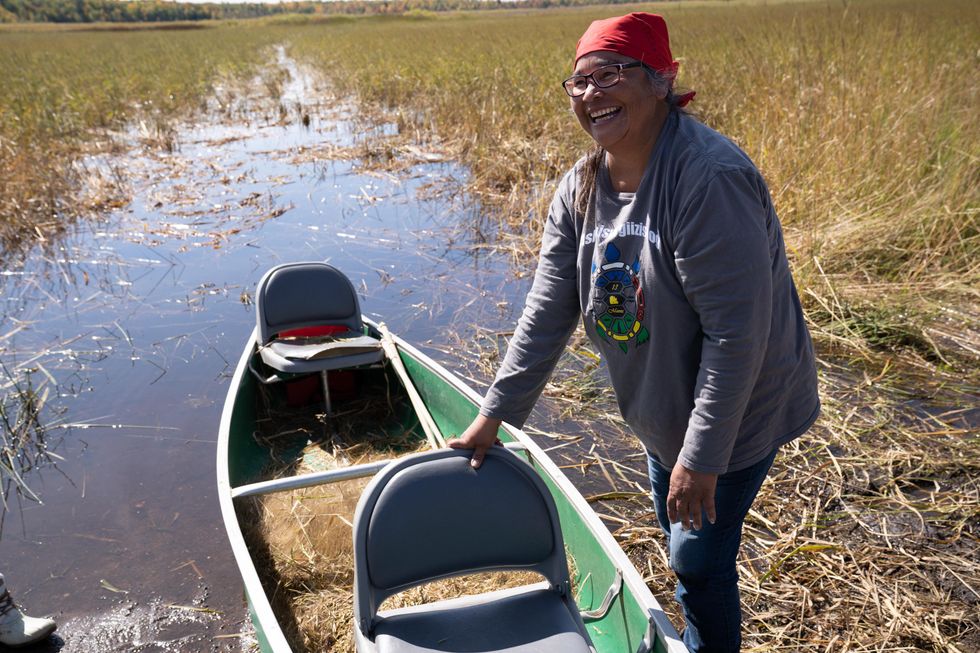
Valerie Whitebird harvests rice at the Fond du Lac Reservation in northern Minnesota. (Credit: Jaida Grey Eagle)
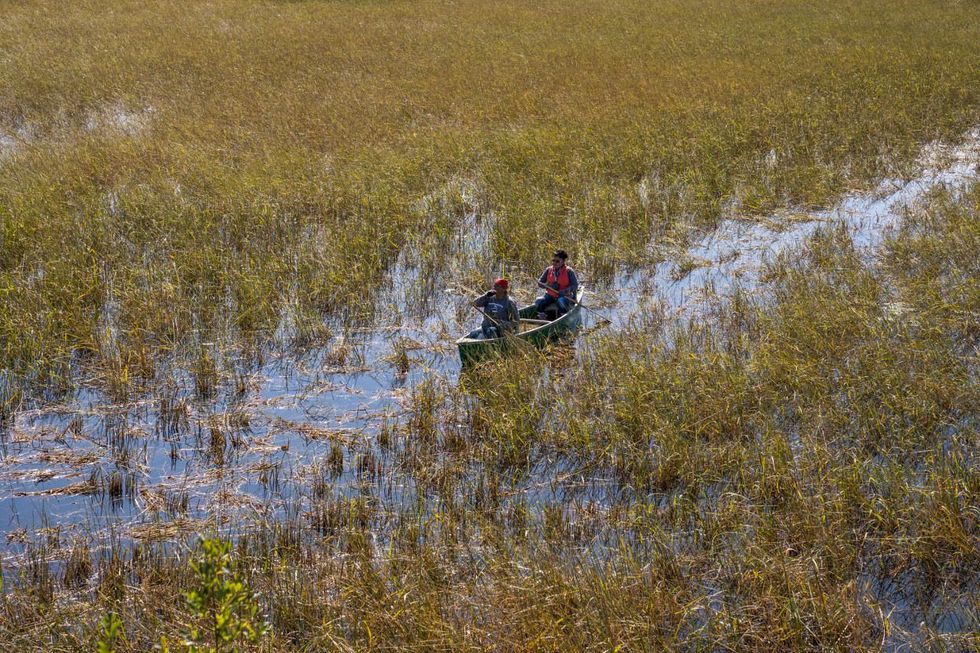
Veronica Smith and Valerie Whitebird harvest rice at the Fond du Lac Reservation in northern Minnesota. (Credit: Jaida Grey Eagle)
After a six-year-long permitting process, Enbridge contractors in Minnesota are building Line 3, the largest project in the company's history. If completed, it will carry 760,000 barrels of oil per day from Edmonton, Alberta, to Superior, Wisconsin, at the tip of Lake Superior, the planet's largest freshwater lake by surface area. Police from the Northern Lights Task Force, Minnesota police officers funded by Enbridge as a condition of state permits, have arrested 72 Indigenous people and allies since construction began Dec. 1, according to task force press releases. Water protectors have put their bodies on the line, building six resistance camps along the pipeline route, chaining themselves to equipment and camping in trees.
Opponents say the threats from the pipeline are many: thousands of construction workers, many from out-of-state, are building the pipeline, posing potential violence to Indigenous women. The pipeline will also contribute to climate change, emitting the equivalent greenhouse gases of 50 coal power plants or 38 million vehicles, according to a report by climate action group MN350. In Minnesota, the pipeline would cross under 200 bodies of water, passing through wetlands where wild rice, a traditional Ojibwe food, grows. The pipeline will carry diluted bitumen, a heavy oil that sinks in water, making it harder to clean up.
At a pivotal moment for global climate action, Line 3 opponents are privately meeting with President Joe Biden administration officials via video calls and publicly demanding they cancel the project. In his first week as president, Biden canceled the Keystone XL pipeline and signed an executive order vowing to address the climate crisis as part of domestic and foreign policy. Biden also promised to respect tribal rights. However, his administration has remained silent on Line 3.
Line 3 construction is paused due to muddy spring conditions, but Enbridge told EHN work will resume in June. At an April energy symposium, Enbridge CEO Al Monaco said Line 3 is on schedule to be completed by the end of the year.Pipeline threatens wild rice
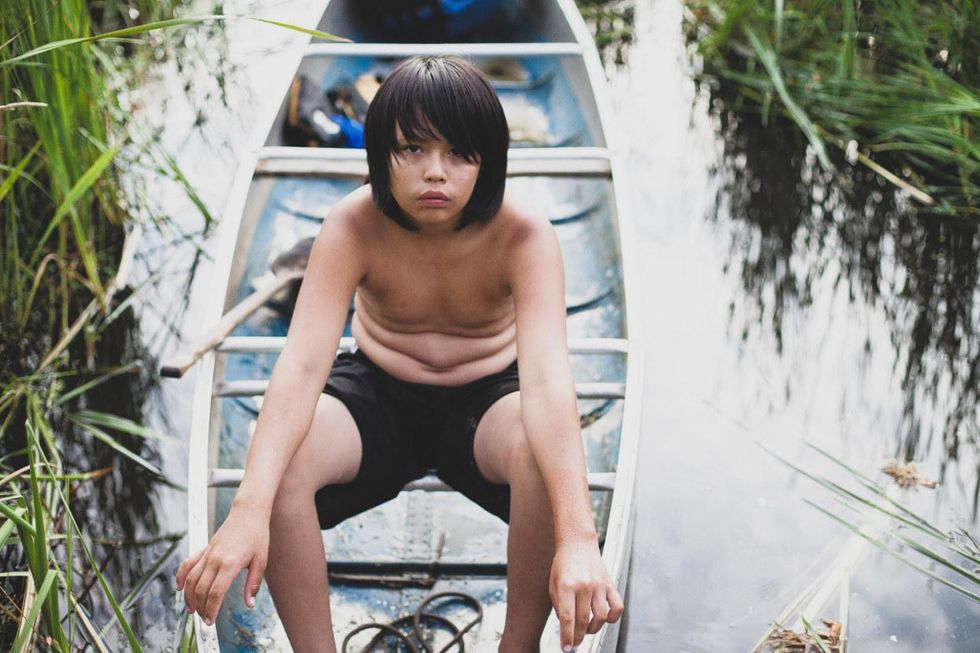
Chinoodin Goodsky during the Paddle to Protect, a youth led canoe 250 mile journey to raise awareness on Enbridge's Line 3 and it's impacts on the land, water and culture. (Credit: Jaida Grey Eagle)
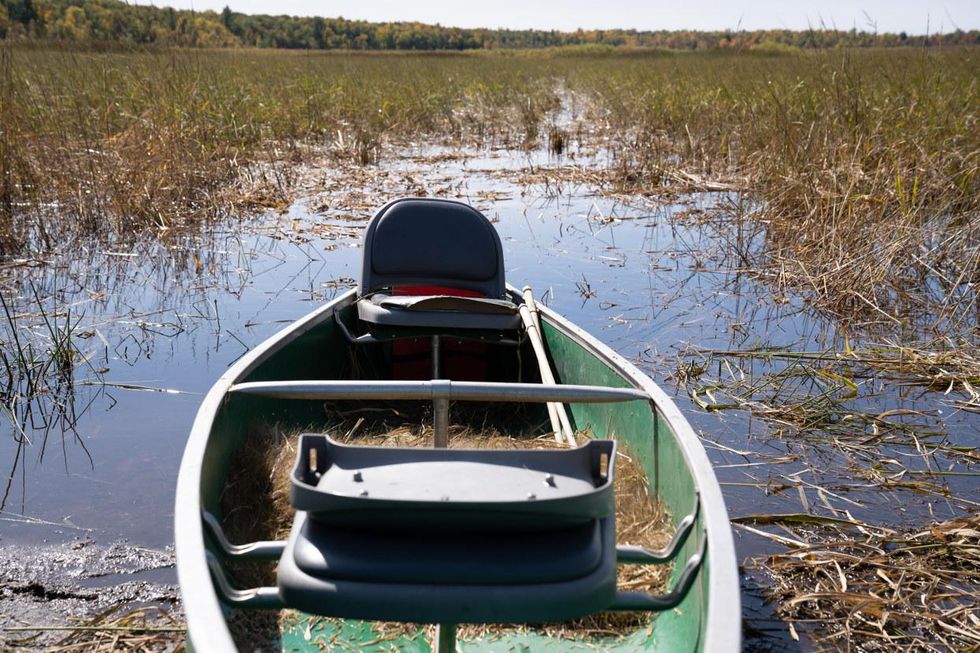
Credit: Jaida Grey Eagle
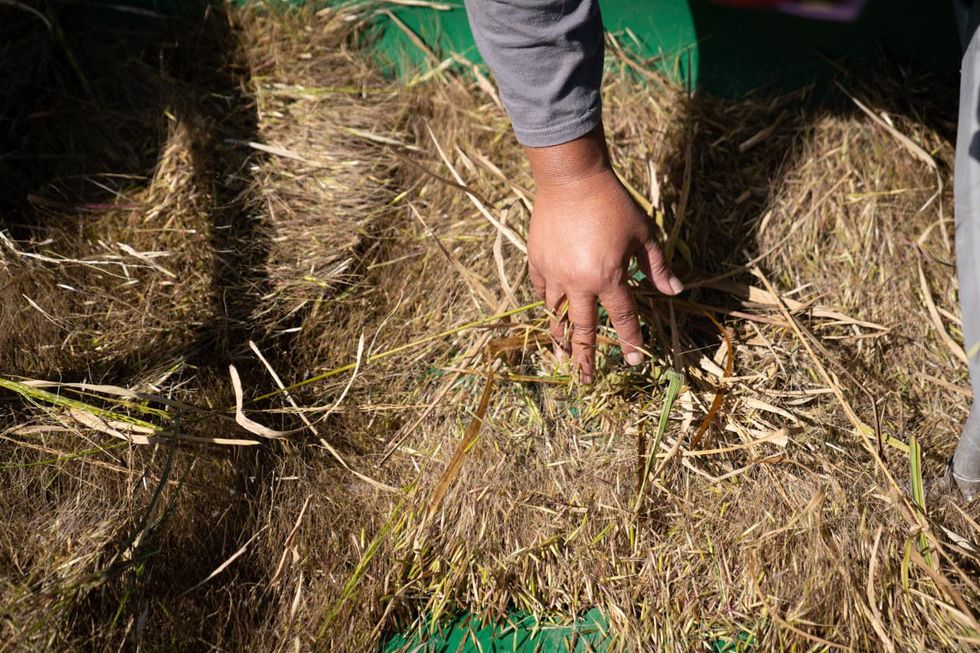
Credit: Jaida Grey Eagle
If you ask Ojibwe people on the frontlines, the story begins thousands of years ago, when they migrated to the land now called Minnesota.
"The Creator told our people to come here, where the food grows on the water, which is wild rice," Tara Houska, Ojibwe tribal attorney from Couchiching First Nation and founder of frontline resistance group Giniw Collective, told EHN.
Called "manoomin" in Ojibwe, wild rice grows in shallow water with tall reed-like stems ending in flowers that ripen into grains. Harvesting is a two-person job, explained Tania Aubid from Mille Lacs Band of Ojibwe: one steers the canoe while the other uses wood tools called "knockers" to gently tap the plants so rice grains fall into the boat.
In the 1800s, as settlers entered Ojibwe territory seeking resources, chiefs signed 44 treaties with the federal government that ceded the land and created reservations. They signed some treaties under threat of starvation, and others because they saw the value of trade and peace, Ojibwe tribal attorney Frank Bibeau told EHN. The treaties are contracts that created the state of Minnesota, and also guaranteed rights to Ojibwe people, including hunting, gathering and fishing. The right to harvest wild rice is enshrined in the White Pine Treaty of 1837. In 1999, a Supreme Court affirmed the state must respect Ojibwe treaty rights.
The original Line 3 pipeline was built in the 1960s, decades before the court ordered the state to honor the treaties, Bibeau said. The pipeline pumped 760,000 barrels of oil per day, but over the decades, Line 3 corroded, cracked, and leaked. In 2008, following dangerous incidents including oil spills into wetlands and an explosion that killed two Enbridge workers, the company reduced its capacity by half, to 390,000 barrels per day.
In 2015, Enbridge announced that, because Line 3 required too much maintenance, it would replace the pipeline to restore its original capacity of 760,000 barrels per day. Although the company calls it a replacement project, the new Line 3 does not trace the same path as the original — it takes a detour south through untouched lands, waters, and wild rice habitat.
For example, the new route will cross under Shell River four times, according to Winona LaDuke, executive director of Honor The Earth. Shell River is one of a handful of waterways the new Line 3 will cross that are home to wild rice, according to opponents.
Wild rice grows differently from one body of water to another, Houska explained, and major environmental changes will affect the sensitive plant. To build Line 3, Enbridge plans to dredge and fill wetlands where wild rice grows. Introducing fill material will dramatically change its habitat, Houska said. The state's environmental review acknowledged wild rice "is extremely sensitive to chemical pollutants" such as oil spills.
Already, Ojibwe people are noticing climate impacts on wild rice. Dawn Goodwin, from the White Earth Reservation, said wild rice needs consistent water levels in the spring, but Minnesota has seen an increase in storms and torrential rain. "Two years ago we got so much water that it didn't ripen well," she told EHN. "That puts our lifeways in danger because it's all connected."
Line 3 legal battles
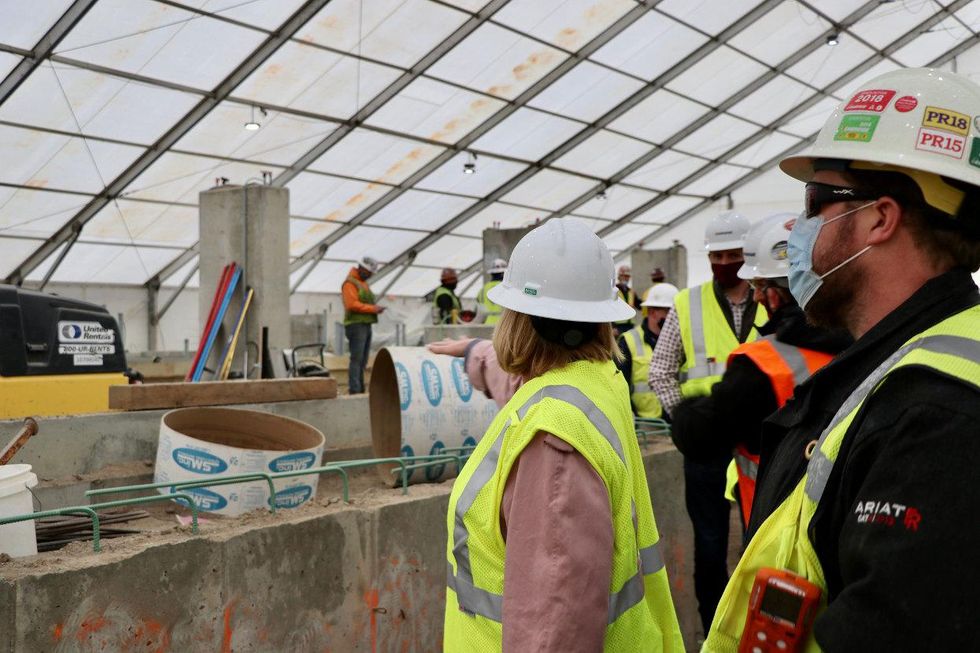
Enbridge Line 3 Pipeline Replacement Project tour near Clearbrook, Minnesota. (Credit: Rep. Michelle Fischbach/flickr)
In 2015, Enbridge applied for permits — a certificate of need and route permit — from the Minnesota Public Utilities Commission. The state's Environmental Policy Act requires the commission to do an Environmental Impact Statement (EIS) before issuing pipeline permits.
The EIS found pipeline construction and climate change would have devastating impacts on the environment and Indigenous ways of life, and would threaten water quality, human health, and habitats for culturally important species including walleye, trout and wild rice. It considered five different routes and found all of them would negatively affect Indigenous communities and ways of life.
The commission weighed the costs of building a new pipeline against the costs of allowing the original to keep pumping oil. The EIS found the existing Line 3 had leaked 15 times since the 1990s, with seven of those spills in Minnesota. In 2018, the commission voted to approve Enbridge's certificate of need, arguing the new pipeline was needed to replace a corroding, leaking line. The commission acknowledged the cost of climate damage from Line 3 could reach $287 billion over 30 years, but said most of those emissions were caused by the consumption of oil, not its transportation.
Environmental groups filed lawsuits arguing the EIS wasn't thorough enough. In 2019, the Minnesota Court of Appeals agreed with them that the EIS had failed to consider how an oil spill could pollute the Lake Superior watershed. The court ordered the commission to redo its review. In 2020, the commission completed its new EIS and again approved Enbridge's permit.
Even with construction underway, there are three court challenges that could "knock the legs out from underneath" Line 3's permits and stop construction, explained Moneen Nasmith, an attorney with EarthJustice.
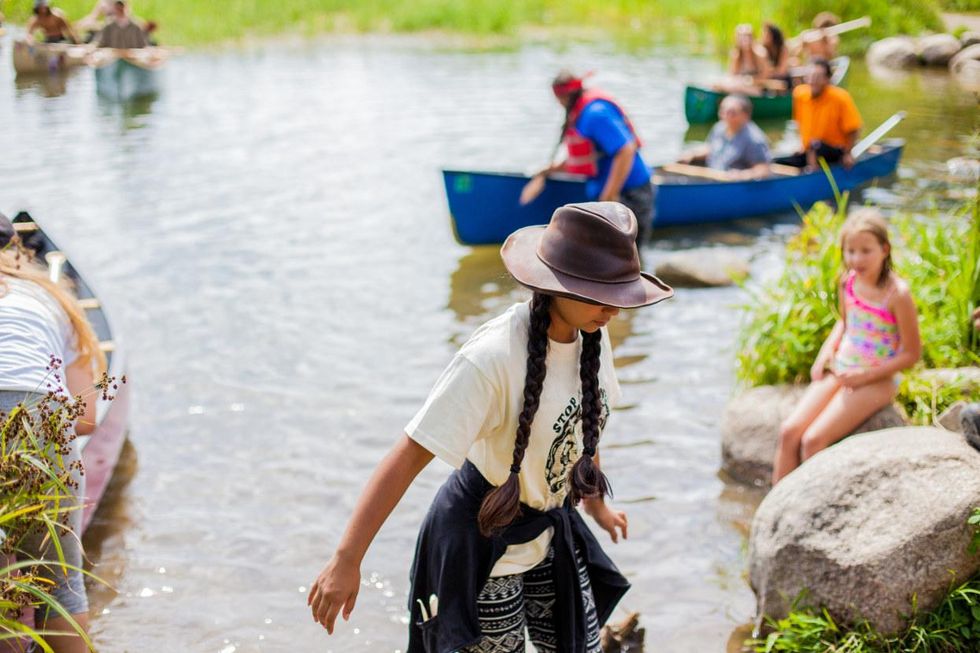
Atquetzali Quiroz during the Paddle to Protect, a youth led canoe 250 mile journey to raise awareness on Enbridge's Line 3 and it's impacts on the land, water and culture. (Credit: Jaida Grey Eagle)
First, environmental groups and tribes have filed another appeal of the EIS. In a twist, the Minnesota Commerce Department has also appealed the commission's decision, arguing the EIS didn't investigate whether there is enough long-term demand for oil through Line 3.
"What they did was absurdly thin," Nasmith, who is not involved in the case, said of the EIS. "So the parties have sued them again for not actually doing what the court told them to do the first time." She said a judge is expected to issue a decision in June.
Enbridge told EHN the review process was "robust and thorough," with 70 public hearings, a 13,500 page EIS, four reviews by administrative law judges, and 320 route changes. "The regulatory process was transparent and inclusive of thousands of Minnesotans, including the same parties who are appealing our permits," Enbridge spokesperson Juli Kellner wrote in an email.
EarthJustice, representing environmental groups and tribes, has also filed two other court challenges, one in state court and one in federal court, in an attempt to overturn permits under the Clean Water Act. Both the state and the federal Army Corps of Engineers reviewed whether Line 3 would comply with water quality regulations under the Clean Water Act, and in November, they issued permits to Enbridge. The company said the Army Corps of Engineers review included consultation with 30 tribes. But Nasmith argues the state and federal reviews failed to consider how a bitumen spill would affect the Lake Superior watershed, including the fish and the tribes who rely on them for survival.
She pointed to the 2010 Kalamazoo River spill from an Enbridge pipeline in Michigan — one of the largest inland oil spills in U.S. history. "If [a spill] were to happen, what does that mean?" she asked. "Answering that question of what that means hasn't been done here — at all."
A decision in the state Clean Water Act case is months away, she said, and the federal case won't be decided before fall.
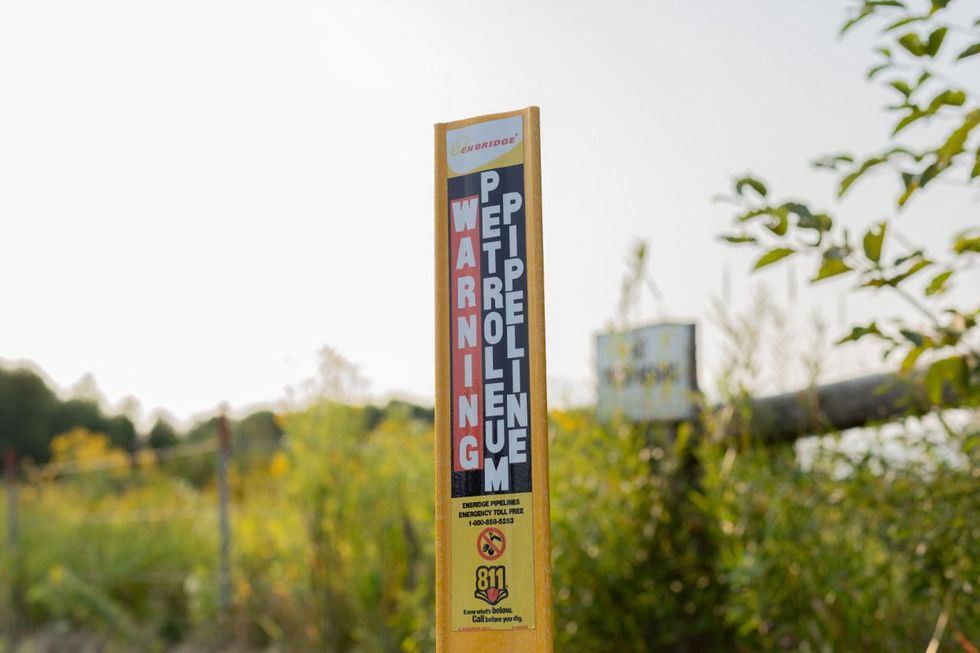
Credit: Jaida Grey Eagle
If the Biden administration wanted to intervene, Nasmith said they have a couple options: the Army Corps of Engineers could revoke the Clean Water Act permit to consider new information, or the administration could revoke the existing Presidential Permit and ask Enbridge to apply for a new one (the company didn't require a new Presidential Permit because it said it was a replacement project). That would kick off a new process similar to the one for Keystone XL, she said.
On April 18, Houska testified before the House Oversight Subcommittee on the Environment that she is fighting for a better world, and described how she was arrested for opposing Line 3: "We are surveilled, we are harassed, we are targeted. I myself was put into a kennel, strip searched and shackled for misdemeanor charges brought for praying in a sacred lodge directly in the pipeline's path."
Houska told EHN Ojibwe groups have also been meeting with the Biden administration. She declined to give details from the meetings, but said they had spoken to representatives of the Council of Environmental Equality, the Army Corps of Engineers, the Department of the Interior, and the Department of Justice transition team. Houska said these agencies are making an effort to hire people who understand tribal affairs, but overall it is "very apparent" that government representatives lack knowledge about tribal sovereignty. "Sovereignty is sovereignty; if we say no, it means no," she said.
Under the Obama administration, the federal government signed a consent decree agreeing to Line 3's replacement. So far, the Biden administration has not signalled it will interfere with construction.
Violence against Indigenous women
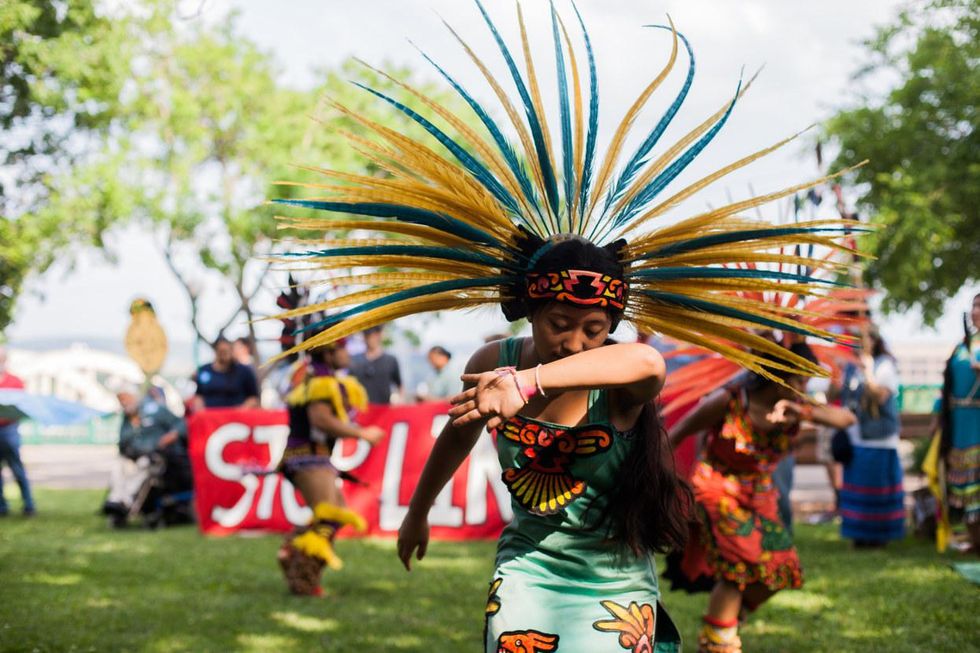
Tania Aubid jingle dress dances at a Stop Line 3 rally in St. Paul, MN during the summer of 2017. (Credit: Jaida Grey Eagle)
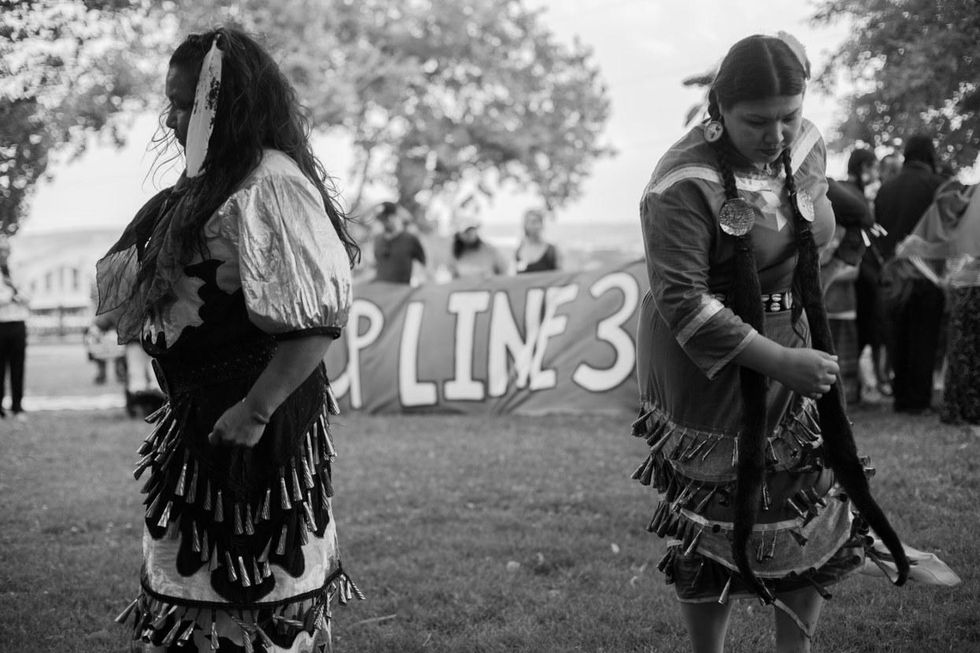
Atquetzali Quiroz with Kalpulli Yaocenoxtli dances at a Stop Line 3 Rally in St. Paul, MN during the summer of 2017. (Credit: Jaida Grey Eagle)
Days after her arrest, Senogles returned to the spot where Enbridge plans to tunnel under the Mississippi, this time with a group of women. One reason Indigenous women are leading the movement against oil pipelines is that Anishinaabe people believe women share a sacred connection to water. The women wanted to place tobacco on the banks of the Mississippi to honor missing and murdered Indigenous women (MMIW) — a crisis across North America in which Indigenous women and girls disproportionately disappear and are killed. According to 2016 data from the National Crime Information Center, there were 5,712 reports of missing Native women in the U.S. Thousands more Indigenous women, girls and two-spirit people (Indigenous people who do not conform to the gender binary or heteronormativity) have met the same fate in Canada, although the true number is unknown.
As the group approached the river, police threatened to arrest them. Senogles felt scared, remembering how she had been pushed to the ground, handcuffed and strip searched. She didn't want the other women to go through that, so they turned back.
Indigenous women at the frontlines told EHN they are experiencing increased violence as they oppose the pipeline. A couple years ago, Aubid said someone shot 19 times through a sign in her yard that said, "Love water not oil, stop the Enbridge invasion."
In February, two pipeline workers with Precision Pipelines, Enbridge's Line 3 subcontractor, were charged in a sex trafficking sting, according to Indian Country Today. The two men were both from outside Minnesota. According to the Duluth News Tribune, one worker was charged with solicitation of a person believed to be a minor. The other worker was charged with solicitation to engage in prostitution and carrying a pistol without a permit.
Enbridge told EHN it immediately fired the two workers. The company said all workers and contractors are expected to follow its code of conduct, and any illegal or exploitative behaviors will lead to dismissal. The company said its workers receive human trafficking awareness training before starting work. As a condition of the state's permits, the company implemented a human trafficking prevention plan.
Jason Goward, a former Line 3 construction worker from Fond Du Lac Band of Lake Superior Chippewa, told EHN that he heard his supervisors and coworkers crack degrading jokes about sex workers. He felt concerned that they could potentially be violent toward women. "My coworkers, I got to know them, and I got to see that there must be some truth to their jokes," he said.
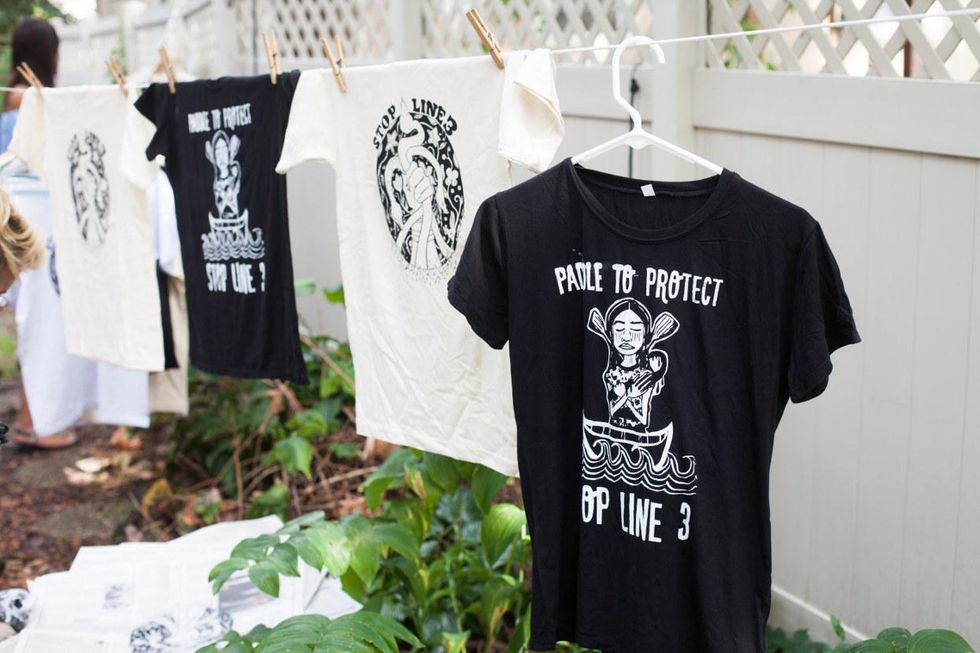
Screen Printed T-shirts made by youth to raise awareness of the "Paddle to Protect" journey during summer of 2017. (Credit: Jaida Grey Eagle)
Sheila Lamb, an Ojibwe-Cherokee city councillor in Cloquet, Minnesota, board member of MN350 and member of Minnesota's MMIW task force, told EHN she heard anecdotal stories of Line 3 workers perpetuating violence: "We're hearing from various organizations that do direct services of a definite increase in sexual assault and sexual harassment that is being perpetuated by those working on Line 3."
Lamb referred to the Violence Intervention Project, a non-profit in Thief River Falls in northern Minnesota, that requested reimbursement from the state for its services helping survivors who were allegedly assaulted by Enbridge Line 3 workers. "Since the Line 3 Replacement project has come to our area, we have experienced an increase in calls and need for services," the document states. "We have provided services to several victims that have been assaulted by employees working on the Enbridge Line 3 project."
The document refers to two separate assaults at hotels and another assault at an Enbridge campground within a three-week period in 2020.
"In addition, some of our staff have young daughters that have reported sexual harassment incidents at the local gas station close to [the] Enbridge Campground; sexually explicit drop texts have appeared on their phones when they are in or near the gas station. We have also heard from young women working at [a] restaurant/bar in a hotel in town. The young women have reported 'cat calls' and 'harassing statements' during their work shift. They have been moved to the kitchen to protect them from these situations. And we have also heard stories of men in the bar, watching and targeting women that are vulnerable."
Lamb pointed to report after report linking the oil and gas industry to violence against Indigenous women; the link was proven by a 2017 U.S. State Department report, Canada's 2019 MMIW inquiry, and in 2020, Minnesota's MMIW task force highlighted the connection in its own report.
Indigenous women disproportionately experience violence, Lamb explained. U.S. Department of Justice data found 84 percent of Native women have experienced violence in their lifetimes. Lamb explained that when events like pipeline construction bring an influx of affluent men to an area, it correlates with an increase in violence against women and sex trafficking.
"When Indigenous women stand up, we get targeted," Senogles said. "Violence on the land is violence on the body."
Speaking over the phone at the end of March, Senogles paused to add wood to a fire under a pan filled with clear maple sap. In eight hours, it will be syrup. In the distance she sees the sun sparkling off the surface of the Mississippi. Birds chirp after returning for spring.
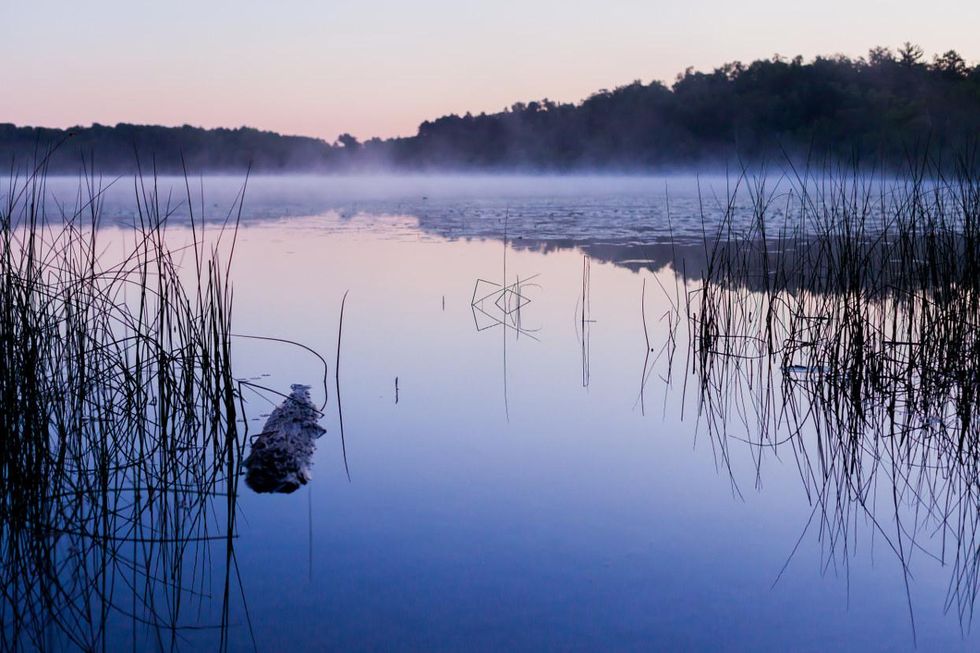
Scenes from a campsite at the headwaters of the Mississippi River the day before the kick off of the Paddle to Protect summer of 2017. (Credit: Jaida Grey Eagle)
The lakes and rivers are freezing later and thawing earlier, and the Mississippi water level is lower than it used to be, she observed. Her region has also seen an increase in Lyme disease. She believes nature is out of balance and Line 3 will exacerbate climate change.
She sees the Line 3 fight as a struggle between Indigenous and colonial perspectives.
"It's a war of worldviews," she explained. "Those worldviews cannot exist together. The Earth is paying the price and so are we."
Banner photo: Stop Line 3 rally in St. Paul, MN during the summer of 2017. (Credit: Jaida Grey Eagle)

